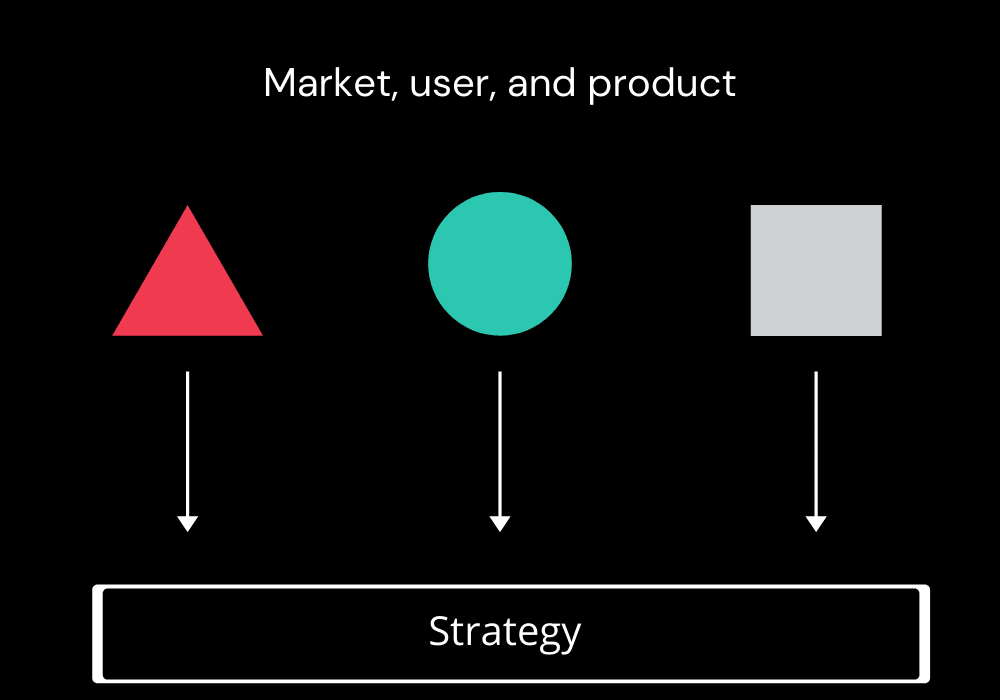
The greatest fear of many entrepreneurs is launching their app or other digital product to crickets. They’re right to be concerned, as no business can survive without customers. But that doesn’t mean attracting your first users has to be difficult. Hundreds of startups have done it before and so can you. Read on to find out how.
Attracting your first customers is an exciting moment. There’s not much that can compare to the thrill of investing hundreds of hours and some or all of your savings and seeing it pay off. That ‘I did it!’ moment is huge. How do you get there?
Extensive research has been done on this exact subject, some of it very recently. Reading many of the spate of recent articles and reports, you’ll find a real focus on the first 1,000 users.

There's considerable interest in how successful startups attract their first thousand users. Possibly because this is a step so many startup ideas never make.
This might be because 1,000 feels low enough to be achievable while high enough to be impressive, it’s a nice round number, and identifying a figure gives you a milestone to reach for, which scientists have shown gives you a serious psychological boost.
As Jess Foster explains, 1,000 users will also give you an important opportunity to gather feedback.
Whether or not you can make generalizable conclusions about your entire market based upon this relatively small early sample will depend on how representative these users are as well as the size of the overall market. If you want to decide your target number of early users based on achieving statistical significance so you can have confidence in drawing conclusions from their feedback, there’s a simple formula you can use.
However, as a rule of thumb, at least 500 users should do the job and 1,000 is enough to draw conclusions with a relatively high degree of confidence. But remember; more is only better if you can get more in a reasonable timeframe.
Remember too that feedback from a small group - or even an individual - can be useful, even if you can’t assume they’re representative of what the wider population would say. A helpful tip to improve your user experience (UX) is still useful, even if only one person suggests it. The same applies to ideas for new features.
There’s no reason to simply accept 1,000 as the magic number. If you find that 1,000 feels too ‘far away’, you can focus on getting your first ten, or even first five, users. The important thing is that you make a plan and get started. Pick a number, and let’s go.
Pick a strategy to attract your first users. Deciding to commit to a clear approach that you know and can describe when asked is far better than the alternative; having no plan and vacillating between different approaches without doubling down on any.

Time to decide, even if it means a big team meeting. Agreeing a strategy explicitly has a number of benefits, including the ability to identify a new approach if your first doesn't work out.
The strategy you decide upon doesn’t have to be any of the approaches we describe below. It might combine them in different ways or be entirely original. But focus on finding one that makes sense for your users and your market, or ‘niche’.
We’ve spoken about the importance of market fit in our ultimate guide to the subject, and the best strategy for you to attract users will reflect your chosen market, the specific characteristics of your users, and your product.

Your strategy for attracting your first users should be shaped by your market, your users, and your product.
The ideal strategy will also exploit the potential synergies between all three.
For example, let’s imagine your digital product is a mobile app for users to find quality barbers who can come and cut their hair wherever they are and for barbers to find customers needing a trim; a haircut marketplace. Let’s think about how you might find your optimal strategy by considering the relationships between:
In our hairdressing marketplace example, you could think of your business as occupying two key markets:
Note; your hypothetical service is not in the hairdressing market. You’re not offering to provide haircuts and nor are you seeking to purchase them. To take an old school example, you’re like the Yellow Pages’ barber section.
You could also consider yourself the Uber of barbers. Just as Uber doesn't offer to drive customers around themselves, so you won’t be going near anyones hair with a pair of scissors.
You’re facilitating a connection between those people who want a haircut (perhaps quickly and affordably, depending on your exact business model) and people providing the hair cutting service as independent service providers.
So far, we’ve developed a very broad outline of the market for your marketplace app, but for best results we should be much more precise.
Your user
For some, especially marketing pros, defining a ‘target market’ is itself the process of identifying the characteristics of your ideal user. In the previous section, we saw why that might not be entirely correct; markets are based more on what people want rather than by who they are.

What do your users want?
However, defining user characteristics is a vital step you need to take if you want the best chance of attracting your first sign-ups. Knowing what people are like better informs the way you reach out to them when looking for your first users.
Let’s return to our haircut marketplace example to see how this works.
It starts with a single question; who is your ideal customer?
There are many ways to answer this question, but try to stick to those aspects that are relevant to your product and are actionable. That is to say, if you can’t use a piece of information, it’s useless.
What is useful or useless information depends on both your market and your product.
Is a user’s height and weight relevant to a barbershop marketplace? Almost certainly not. Therefore, do not waste paper writing this into your ideal user profile.
However, this is highly contextual. There are digital products for which this information might be valuable to keep in mind. If your digital product were designed to help obese people improve their physical fitness in a way that focuses on the specific challenges that they face - rather than people of average weight or slightly overweight people - knowing the approximate weight of your ideal customer would be useful and actionable information.
Once you’ve identified the likely characteristics of your users you can start using that information to shape your strategy to attract them. We’ll dig into this more deeply below, but this is a process that - while simple - rewards creative thinking.
For instance, let’s assume that you’ve decided that your ideal target user is more likely to live in a major metropolitan area, is extroverted, and is aged between eighteen and thirty-nine.
While researching the preferences of people with these characteristics, you may discover that they regularly visit nightclubs and trendy bars. Realizing this, you consider your advertising options:
Although not as all-knowing and all-powerful as the public may believe, largely due to scandals exemplified by Cambridge Analytica, Facebook’s ad manager has precise targeting tools that make it valuable to advertisers.
Knowing this, you investigate how precisely you might target your audience with Facebook ads. You discover that you can target your preferred areas - cities - as well as determining the age range and interests (nightlife and craft beers?) of the people seeing your ads.

Many paid advetising platforms such as Facebook's, pictured here, allow you to target people with particular interests in specific locations.
A major advantage of advertising on a platform like Facebook is that, as you're promoting a digital product, people will be able to download immediately from the ad. Put simply, the conversion funnel can be extremely short. Facebook even lets you specify that your goal is conversions, although your initial goal may simply be to raise awareness.
If a large segment of your target users like to party at cool bars and clubs, why not promote your product there? Local advertising costs can be considerably cheaper than Facebook ads, and you benefit from associating your product with a trusted local business.

Local businesses such as bars have long been attractive places to promote products. Increasingly, this is true of digital products.
You contact some venues for a quote and find that some ads placed in their bathrooms will indeed be cheaper than online advertising. As a budget-conscious entrepreneur who knows that multiple touchpoints in marketing can yield great results, you decide to promote your app at these physical locations, directing people to your page on the App Store and Google Play.
This section has demonstrated how the distinctive features of your target users can shape your strategy for attracting your first users. The key takeaway is this;
Don’t pick a strategy to get your first users because it seems familiar, from habit, or because it has a buzz around it. Pick it because the evidence shows it will get you in front of the right people in a way that resonates with them - preferably while keeping costs down.
We’ve seen how your market and intended audience can shape your early user acquisition strategy. Now it’s time to consider the role of your product.
A lot of advice you’ll find online comes down to this:
“Developing an iOS app? Let’s hope your users aren’t all on Android devices!” While true, that’s more a point about user characteristics (which we’ve already covered).
Your product affects your strategy in different ways. For example, consider the question of access. How can your prospects physically access your product? Is download required, or is it accessible through a web browser?
The latter would mean a lower level of commitment is required to get started, possibly increasing initial uptake. However, unless they’re extremely impressed with your product it’s unlikely you’ll retain as many users.

Every decision involves tradeoffs. By increasing the barriers to entry, it's likely that your user base will be firmer. On the other hand, easy access will probably mean you receive more initiral users - even if they're less committed.
If maximizing the number of initial users is your strategy, lowering barriers to access (other examples include things like paywalls) can help with that, as can minimizing the perceived complexity of your product.
This is a good moment to point out that while a high number of inbound users is good, successful startups also care about whether those users stick around. Therefore, it’s important to consider the types of users that will find your product most useful when developing your strategy.
A strategy that works for one startup may not work for another. Choose or adapt the strategy that best fits yours based on your market, users, and product. We’ve framed each strategy around a key question that you can ask about your users. Answering them should help you understand the fundamentals of your business.
They say all publicity is good publicity. However, the best publicity comes from whatever your target customers are reading (or watching - there’s no reason to just focus on written content, although it is easier to produce).
With tools like Facebook Audience Insights, you can find out where your preferred users are spending time online. You may be surprised at what you find. That’s important, because too often entrepreneurs assume they know all their target customers’ preferences, including their publications of choice. Tools drawing form large pools of anonymized data like this can help you discover new opportunities to reach your audience.
You can also check out Reddit and similar community focussed sites to see the kind of outlets users are linking to.
Once you’ve identified what they’re reading you can focus on trying to get coverage from those outlets (or even write for them yourself). At its core, this is where the traditional field of public relations meets new media. Chances are, the lowest hanging fruit will be online-only publications.

Your ideal users probably share certain behaviours - including reading habits. This presents an opportunity to get in front of them.
It’s not that you should write off big-name printed publications entirely, but remember that outlets like Wired or Forbes are no strangers to ambitious startups reaching out for extra publicity. With so many hungry companies vying for their attention, you’ll need to offer them a great reason to write about you (assuming you can cut through the noise).
So try to find smaller outlets with a loyal following containing a large number of your target users. Reach out directly, be respectful of their time, and suggest why it would benefit them to cover your startup. You might point out how your product addresses a current event that particularly affects their readership. Don’t make them have to work to see why they should write about you - clear benefits lead to an easy yes.
StackOverflow is well known as a place where developers can be part of a community, but as a digital product it grew out of existing communities already established by its founders Joel Spolsky and Jeff Atwood.
Joel had a loyal following around his long-running blog Joel On Software, while Jeff had an equally firm footing among developers at Coding Horror. Their resulting high profiles as trusted members of the online developer community allowed them to easily reach StackOverflow’s target users.
If you don’t already have easy access to a pre-existing community, don’t worry. Things move fast on the Internet, and creating one can take less time than you think (although arguably not less effort - communities congregate around people who provide real value).

A community gives you an easily identifiable group of potential users you can address at the same time.
To accelerate the process you can combine this strategy with our previous one - publicity.
An excellent example of how this can be done in stages is the language learning app Fluent Forever. In 2012 Gabriel Wyner - founder - wrote a LifeHacker article on how he’d combined different tools into a single method rooted in neuroscience for learning languages extremely quickly and retaining that knowledge over the long term.
That post formed the springboard for him to establish a community of language learners eager to emulate his success. Gabe quickly built an email list and wider online fan base by drawing on this publicity. He established his own blog, feeding the community and keeping its enthusiasm alive with fresh content.
In time, he was able to publish and sell a book, vocabulary learning guides, and MVP language pronunciation trainers built on Anki as forerunners to the Fluent Forever app. In 2017, Fluent Forever became the most crowdfunded app in history, raising over $1.7 million for its development. This success was built on the passion of the community for the method, a passion nurtured carefully by Gabriel Wyner.
The takeaway? If you have a community, leverage it. If you don’t, create content that will inspire a following and use that to grow a community of passionate advocates.
Some types of users congregate in specific, real-world places. While some locations such as grocery stores are frequented by a broad cross section of the public - making them less useful for reaching specific groups - some places serve as magnets, concentrating particular groups in unusually high densities.
Consider college campuses, for example. It’s no accident that so many unicorns got their start in these predominantly young, educated, risk-tolerant, and future-facing environments.
Facebook may be the most widely cited example, but a more interesting one is Tinder. College users are disproportionately open to new experiences and as a result are often among the first users of breakthrough applications.
Consider that colleges are also home to large numbers of young, status-conscious, single adults and you have the perfect breeding ground for a fast, gamified dating app.
That was the reasoning of Sean Rad and Justin Mateen, Tinder’s founders. They promoted Tinder in person across the University of South California (USC) campus, focusing particularly on the Greek system (fraternities and sororities).
The advantages of approaching people in person in public places should be clear; you don’t have to pay to access someone else's community. This helps keep your ad costs down. At the same time, it introduces another ‘touchpoint’ in your marketing efforts.
A touchpoint is essentially any contact between your brand and your target customer. By combining online and offline touchpoints, you can increase confidence among your potential user base that your offer is legitimate and better stay on their radar.
Offer to show them how the app works in person so they download it immediately. Branded tees and supporting merchandise will make people less hesitant to approach you and less fearful when your representatives approach them.
And keep it short and sweet. People have places to be.
To summarise, identify physical locations where likely users congregate and go to them. For best results, don’t just hand out fliers (though you should probably have them).
You know that your digital product is special, and you want people to know it. The problem is that there are hundreds of thousands of other founders with their own digital products out there, and many of them are working just as hard as you to promote their mobile or web app.
To stand out from the crowd, you need to use every weapon you can find. Sometimes, the tactics you use may not seem fair. That’s fine. Life isn’t fair. Many of your rivals will have their own unfair advantages of their own such as a helpful industry insider connection or a cofounder’s parent who owns a hedge fund.
Of course, you should make sure whatever you do is both ethical and legal, but you shouldn’t be afraid to be a little cheeky.

Standing out can be a challenge. Doing so often takes considerable creativity.
An instructive example is Musical.ly, now TikTok. Co-founder and co-CEO Alex Zhu discovered something strange about the App Store that rivals didn’t seem to realize. The algorithm was giving more weight to application names than keyword labels, and simply having a long, descriptive ‘name’ would give any application an advantage (even if using the name of the product as a description wasn’t how the App Store was intended to work).
Would Apple have frowned upon this creative use of their store’s functionality? Quite probably. Did this insight give Zhu and his team an advantage over other apps on the marketplace? Absolutely. What is the current private market valuation of ByteDance, the owners of TikTok? $100 Billion.
By their nature, little advantages like this can be hard to spot and quick to vanish. But if you find one, and it checks out both legally and ethically, you’d be wise to make the most if it.
You may know your ideal users, and they in turn are likely to know others. The power of the personal network has been enhanced by the power of the Internet, as like-minded people have found it easier to connect around shared interests. This means that if you know just one member of a community, the likelihood of your connection going on to share it with others - perhaps lots of others - is significantly increased.
Additionally, the probability of the recommendation ending up in the hands of a powerful influencer, opinion maker, or trend setter has also escalated.
Yelp managed to reach 1,000 users almost exclusively through this method. The founders, including their former CTO Russel Simmons, had an excellent network from their previous work at tech businesses like Paypal. Their network also happened to match the profile of an ideal Yelp user - an opinionated mid-high earner over the age of thirty - who frequently dines out.
Enthusiastic early users are more useful, so while friends and family may not be useful when it comes to honest feedback, the opposite is true when it comes to spreading the word.
Back in 1998, you couldn’t watch movie trailers on YouTube. If you wanted to see a specific trailer, as thousands of Star Wars fans did when Episode One: The Phantom Menace was teased, you’d have to buy a ticket to another movie. And people did. Even for movies they didn’t want to see, like Meet Joe Black.
That’s the power of anticipation; of waiting for something you know exists but you can’t have yet, however much you may want it.

Creating a sense of longing among your target users can mean rapid growth when your MVP is ready to go.
Whether or not the founders of Instagram were big Phantom Menace fans, we may never know. But even if they didn’t do so deliberately, they still evoked its spirit by successfully building an enormous buzz around the general release of their digital product.
In much the same way as tickets to a movie premier are scarce and usually distributed to a narrow selection of invitees, with the star-studded event intended to create excitement among the wider public, Instagram took the same approach with a ‘premier’ of their own.
As Kevin Systrom, Instagram co-founder explains, they initially allowed access to a carefully curated pool of social media users with the visual design community. These people weren’t celebrities, but they did have unusually large followings on Twitter within the design niche.
As Kevin explains, “... because they shared to Twitter, it created this tension, of like “When is this thing launching, when do I get to play with it?” and that’s the day when we actually launched, it had that springboard affect.”
When you see the excitement building, you can help your future users channel that energy towards you with a simple landing page. It doesn’t have to be fancy - even Sony have a relatively plain one for the PS5. There’s nothing wrong with a little mystery.
Gather those email addresses and let people know your release day. The anticipation should reach fever pitch as launch day approaches.
We hope you’ve found this post helpful as you think about the next steps for your startup. Please remember to share if so, and reach out to us with any feedback. As a digital product development agency, we’re always on the lookout for exciting new startups we can learn from.